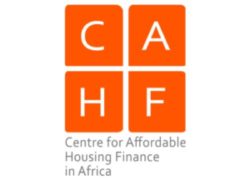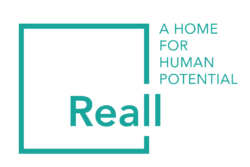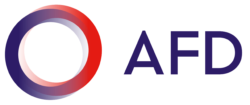Uganda - Market Shaping Indicators
View Reall projects in UgandaAs a priority country, Reall has been engaged in Uganda since 2014, partnering with Enterprise Housing Development Uganda (EHDU). In 2020, Reall initiated a new partnership with Smart Havens Africa (SHA). Smart Havens brings a significant track record in creating women’s access to employment and property and in green and climate smart technologies. Uganda has also been one of CAHF’s priority countries since 2015 and has collaborated with FSD Uganda (FSDU) across research programmes. Together with the yearbook profile, CAHF’s research in Uganda is an important input into the broader Data Agenda work in Uganda identifying key gaps in housing market data that would help create a better understanding of the housing ecosystem, for more targeted interventions and policy.
Country Overview
Housing provision remains one of the most pervasive challenges faced by over two-thirds of Uganda’s population. For low income households, which account for more than 60 percent of urban households in Uganda, the formal housing economy is inaccessible. The country has a housing shortage of approximately 2.4 million units, and produces 60 000 housing units against a demand of 200 000 housing units a year. Access to affordable housing is exacerbated by insecure urban land tenure, mushrooming informal settlements, high costs of rental housing. High mortgage interest rates (currently at 17 percent), and the need for bankable collateral pose serious hurdles for low income households to access formal mortgage loans and therefore adequate housing. A great proportion of housing in Uganda is therefore self-provided and often constructed incrementally. Poorer households tend to occupy low quality units such as single-room dwellings of less than 10m2, at average monthly rents of USh150 000 (US$40) and below. The country is largely characterised by private-sector led housing development, which is unable to meet the growing demand for affordable housing.
State of Housing Data
For prospective investors, key public institutions including the Bank of Uganda and Uganda Bureau of Statistics usually disseminate data on the housing finance sector, and these are the most reliable sources of information. Bank of Uganda provides economic data and reports on the performance of financial and non-financial institutions and private sector credit. Uganda Bureau of Statistics publishes quarterly and annual reports with data and information on household incomes, poverty rates, housing conditions and residential prices. Information about mortgage lending and related market and population dynamics are published on a quarterly and yearly basis by these institutions, augmented by other government ministries, departments and agencies and non-state special-interest organisations.
Accessing hard data on mortgage rates, numbers, housing stock, costs of construction and housing prices for research purposes from financial institutions and other actors is by way of formal requests through bureaucratic systems. There are significant data gaps that hinder understanding of property transactions, access to finance and mortgage credit. There is also a lack of downloadable data from real estate, property and other private sector institution websites. Critical land assembly data published by the Ministry of Land, Housing and Urban Development is often outdated, limiting understanding of the government’s commitment to housing provision, as well as the formality of the housing sector.
Accessible, timely and credible data is critical for informing policy and investment decisions in Uganda’s housing sector. The Bank of Uganda could be an alternative data provider for accessing important income and transaction data through banks and credit bureaus. Data relating to housing sector formality should be presented in an accessible format and be frequently updated, allowing for improved public understanding of the processes involved in, for example, property registration and title deed access. The publication of nationally representative data would avoid sampling bias caused by an overreliance on private sector sources.
Text on this page is based on the MSI Uganda Country Profile, drawn from Centre for Affordable Housing Finance (2020). Housing Finance in Africa Yearbook: 11th Edition 2020, with additional content from CAHF and Reall.
Key Indicators
1. Land & Infrastructure
% of urban bottom 40 households without access to basic sanitation services
| Country | Year | Data Source | Value |
|---|---|---|---|
| Cote d'Ivoire | 2012 | DHS | 96.5% |
| Ghana | 2014 | DHS | 93.15% |
| Kenya | 2014 | DHS | 88.25% |
| Morocco | 2004 | DHS | 52.05% |
| Mozambique | 2011 | DHS | 95.6% |
| Nigeria | 2018 | DHS | 83.1% |
| Tanzania | 2017 | DHS | 37% |
| Uganda | 2016 | DHS | 94.5% |
| Rwanda | 2016 | National Institute of Statistics Rwanda (NISR) | 13.13% |
| Pakistan | 2018 | The DHS Program | 2.75% |
| India | 2018 | NSSO 76th Round | 0.2% |
2. Construction & Investment
% of urban population living in slums, informal settlements, or inadequate dwellings
| Country | Year | Data Source | Value |
|---|---|---|---|
| Cote d'Ivoire | N/A | ||
| Ghana | N/A | ||
| Kenya | N/A | ||
| Morocco | N/A | ||
| Mozambique | N/A | ||
| Nigeria | N/A | ||
| Tanzania | N/A | ||
| Uganda | N/A | ||
| Rwanda | 2018 | World Bank | 42.1% |
| Pakistan | N/A | ||
| India | 2018 | NSSO 76th Round | 35% |
3. Sales & Rental
Price of the cheapest, newly built dwelling by a formal developer or contractor
| Country | Year | Data Source | Value |
|---|---|---|---|
| Cote d'Ivoire | 2018 | Site d'annonce et promotion dans l'immobilier en Côte d'Ivoire | 15,500,000 CFA$27,087.48 |
| Ghana | 2019 | Damax Construction Co. Ltd | 108,704 GH₵$19,621.66 |
| Kenya | 2019 | Tsavo Real Estate | 4,000,000 Ksh$37,037.04 |
| Morocco | 2019 | Various real estate websites | 250,000 DH$27,027.03 |
| Mozambique | 2016 | Casa Minha | 3,418,491 MZ$48,147.76 |
| Nigeria | 2019 | Millard Fuller Foundation; Shelter Origins | 2,900,000 NGN$7,651.72 |
| Tanzania | 2018 | CAHF | 37,966,107 TZS$16,508.58 |
| Uganda | 2019 | Various property developers | 125,000,000 UGX$34,097.11 |
| Rwanda | 2020 | Marchal Real Estate Developers | 10,000,000 R₣$11,119.14 |
| Pakistan | 2021 | Partners | 2,500,000 PKR$14,305.33 |
| India | 2022 | Real estate websites and industry experts | 160,000 IN₹$2,176.87 |
3. Sales & Rental
% of national households that rent their dwelling
| Country | Year | Data Source | Value |
|---|---|---|---|
| Ghana | 2017 | Ghana Statistical Service | 28% |
| Kenya | 2019 | Central Bank of Kenya, Kenya National Bureau of Statistics, FSD Kenya | 35.01% |
| Morocco | 2014 | High Commission for Planning; World Bank | 18.5% |
| Nigeria | 2018 | World Bank; Nigeria National Bureau of Statistics | 21.8% |
| Tanzania | 2017 | National Bureau of Statistics | 80.56% |
| Uganda | 2016 | DHS | 53.45% |
| Rwanda | 2020 | Access to Finance Rwanda (AFR) and National Institute of Statistics Rwanda (NISR) | 8.94% |
| Pakistan | 2017 | Population and Housing Census | 11.53% |
| India | 2018 | NSSO 76th Round | 13% |
5. Enabling Environment
Ease of Doing Business Index Rank: Global
| Country | Year | Data Source | Value |
|---|---|---|---|
| Cote d'Ivoire | 2020 | World Bank | 110 |
| Ghana | 2020 | World Bank | 118 |
| Kenya | 2019 | World Bank Ease of Doing Business | 61 |
| Morocco | 2020 | World Bank | 53 |
| Mozambique | 2019 | World Bank | 74 |
| Nigeria | 2020 | World Bank | 131 |
| Tanzania | 2020 | World Bank | 141 |
| Uganda | 2020 | World Bank | 116 |
| Rwanda | 2020 | World Bank Ease of Doing Business Indicators | 38 out of 190 |
| Pakistan | 2020 | World Bank Doing Business Indicator | 108 out of 190 |
| India | 2020 | World Bank | 63 out of 190 |
6. Economic Environment
GDP Per Capita
| Country | Year | Data Source | Value |
|---|---|---|---|
| Cote d'Ivoire | 2018 | World Bank | 1,024,171 CFA$1,789.82 |
| Ghana | 2019 | World Bank | 11,489 GH₵$2,073.83 |
| Kenya | 2018 | World Bank | 173,272 Ksh$1,604.37 |
| Morocco | 2018 | World Bank | 30,725 DH$3,321.62 |
| Mozambique | 2018 | World Bank | 30,772 MZ$433.41 |
| Nigeria | 2018 | World Bank | 659,159 NGN$1,739.21 |
| Tanzania | 2018 | National Bureau of Statistics; World Bank | 2,297,020 TZS$998.80 |
| Uganda | 2018 | World Bank | 2,357,327 UGX$643.02 |
| Rwanda | 2019 | World Bank | 737,578.59 R₣$820.12 |
| Pakistan | 2020 | World Bank National Accounts Data | 188,900 PKR$1,080.91 |
| India | 2020 | Ministry of Statistics and Program Implementation | 151,760 IN₹$2,064.76 |
7. Demand
Population Size
| Country | Year | Data Source | Value |
|---|---|---|---|
| Cote d'Ivoire | 2017 | World Bank | 24,437,469 |
| Ghana | 2019 | World Bank | 30,417,856 |
| Kenya | 2017 | World Bank | 50,221,473 |
| Morocco | 2017 | World Bank | 36,471,769 |
| Mozambique | 2018 | World Bank | 29,495,962 |
| Nigeria | 2017 | World Bank | 190,873,311 |
| Tanzania | 2019 | World Bank | 58,005,463 |
| Uganda | 2017 | World Bank | 41,487,000 |
| Rwanda | 2019 | World Bank | 12,626,950 |
| Pakistan | 2020 | World Bank National Accounts Data | 220,892,331 |
| India | 2021 | Minsitry of Health and Family Welfare | 1,361,343,000 |
All Indicators
Please enter 3 or more characters to begin search.
You can then click on a result to be taken to the relevant tab.
The Market Shaping Indicators project is a work in progress. Significant gaps exist in data, which will be filled in future revisions. We would recommend checking back regularly for updates. We are keen to receive any feedback that you have on this Dashboard, which can be sent to [email protected].
Using the Dashboard
The indicators are split into 6 key areas, split into the Housing Value Chain: Land & Infrastructure, Construction & Investment, Sales & Rental, Maintenance & Management, Enabling Environment, Economic Environment and Demand, shown in the following tabs. Navigation can either be undertaken by using the tabs, or through the Search box immediately above. Above this, currency indicators can be toggled between USD and local currency.
Users are able to further interrogate each indicator each indicator through clicking on the arrows to the left of each indicator. This expanded section shows the data elements that are used to produce the overall indicator value, dates of data collection, source details, hyperlinks to the original data where possible, and a breakdown of data quality. The majority of indicators are quality assessed, based on the whether they are: Interpretable; Relevant; Sufficiently Accurate; Representative; Timely; and Accessible. Indicators are scored on each of these criteria using a 1-4 star system, detailed below:
☆ – poor
☆☆ – moderate
☆☆☆ – good
☆☆☆☆ – excellent
Finally, all data can be downloaded for further interrogation. By clicking on Switch to Data View at the top of the screen, users can filter data based on countries and columns, and download in a .csv or .xls file.
Bottom 40
Reall targets the Bottom 40% of the urban income pyramid, referred to as the ‘Bottom 40’ or ‘B40’. An objective of the MSI work was to better understand and demonstrate the market from the perspective of households in the Bottom 40, and as such data is aggregated for this group where possible. Data for this group can be particularly challenging to come across. In part, this is due to the difficulties in accurately defining this group using existing data sets. Additionally though, the informality of much of life for lower income groups severely limits data availability, particularly in terms of key data on jobs, housing and relationships with local government. This lack of data is a key blockage for further engagement at the lower end of the housing market, and resolving this is an objective of Reall’s and of the MSI work.
Aggregations
Data is shown at various different “aggregations”, which demonstrate the size and location of the population for which the data represents. This varies from national to city level in terms of population groupings. Additional aggregations exist for the Bottom 40, as detailed above, enabling a focused view on the lower end of the market.
For relevant data, Reall’s partners are also included as an aggregation. This is not meant to be representative of the entire market, but recognises that as practitioners and experts within the lower end of the housing market of each country, their experiences are a useful check on other data sets, and an indication of the value when other data is not available.
Terms of Use
Reall Ltd (“Reallâ€) endeavours to make its data as freely available as possible in order to demonstrate the successes of its model and encourage other actors into the affordable homes movement. Reall provides the user with access to these data free of charge subject to the terms of this agreement.
Users are encouraged to use the data to benefit themselves and others in creative ways.
Unless specifically labelled otherwise, you are free to copy, distribute, adapt, display or include the data in other products for commercial or non-commercial purposes for no cost under a Creative Commons Attribution 4.0 International License, with the additional terms below.  The basic terms may be accessed here. By using or downloading the data, users are agreeing to comply with the terms of a CC BY 4.0 licence, and also agreeing to the following mandatory and binding additions:
– You agree to provide attribution to Reall in any published use of the data, including but not limited to articles, papers, blogs, books. Usage includes both direct publication of the existing data, along with any analysis undertaken by the user. This attribution should include Reall’s name and the following link – reall.net/dashboard. An electronic copy of all reports and publications based on the data should be shared with Reall ([email protected]).
– When sharing or facilitating access to the data, you agree to include the same acknowledgement requirement in any sub-licences of the data that you grant, and a requirement that any sub-licences do the same. You may meet this requirement by providing the uniform resource locator (URL) to these terms of use.
– Some datasets and indicators may be provided by third parties, and may not be redistributed or reused without the consent of the original data provider, or may be subject to additional terms and conditions. Where applicable, third party data is labelled as such, and usage conditions can be found on their respective websites.
Land
The provision of affordable housing in Uganda has been significantly affected by land governance challenges. This is exacerbated by an unregulated urban land market, driven by speculation, resulting in inflated land prices. Uganda scores low (ranking 135 out of 190) in the quality of land administration index, which is composed of the reliability of infrastructure, transparency of information, geographic coverage, land dispute resolution and equal access to property rights.
Infrastructure
Transport is a key expenditure item for most households, and is exacerbated by urban sprawl and poor accessibility to urban centres. Nationally, households spend approximately 14 percent of their income on transport. However, this does not capture the spatial and income inequality often felt by poorer households living in cities (which also impacts mortgage affordability).
A lack of access to basic services reflects the poor living and housing conditions of most Ugandans, whose access is significantly reduced as you move downmarket. In 2017, the proportion of the population living in households without access to basic drinking water and sanitation services was 51 and 57 percent, respectively. In contrast, 57 percent and 82 percent of the urban bottom 40 of the population were reported to have no access to drinking water and sanitation services. Almost all (97 percent) urban bottom 40 households had no access to electricity in their homes in 2016.
There have, however, been efforts to address access to housing conditions and affordability. Government assistance has focused on developing crucial housing-related infrastructure. This includes power supply, piped water supply, sanitation and solid waste management. By the end of 2019, the state-owned National Water and Sewerage Corporation had increased piped water supply coverage, reaching approximately eight million people in 280 urban areas, close to 100 percent coverage of the country s urban population, a significant improvement over the previous three years.
Of the 23 indicators in this group, 9 are currently populated.





